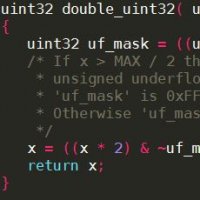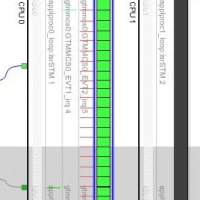Continuing our series of blog posts on optimizing embedded software with the aim of improving (i.e. reducing) worst-case execution times, this week’s subject is look-up tables.
Software optimization techniques which improve worst-case execution times #8: Look-up Tables
Using look-up tables can be a highly effective method of improving worst-case execution times.
Look-up tables are useful in implementing pure functions (by which we mean a function without any side effects) of one or two variables that take a relatively limited range of values and are mapped via some non-trivial code to a value possibly of a different type.
Examples include approximations to trigonometric functions such as sin() and cos().
Example: Switch
Uint32
switch_code1(Uint32 mode)
{
Uint32 message_id;
switch(mode)
{
case 0:
message_id = 0x55;
break;
case 1:
message_id = 0x66;
break;
case 2:
message_id = 0x77;
break;
}
return message_id;
}
Sometimes switch statements are used to map solely from one variable to another. In this case a more efficient implementation would be to use a look-up table as shown in the example below.
Example: Look-up table rather than switch
const Uint32 g_id_table[3] = {0x55,0x66,0x77};
Uint32
lookup_code2(Uint32 mode)
{
return g_id_table[mode];
}
The look-up table implementation has a worst-case execution time that is both shorter and constant. It also requires less code space. The effectiveness of this technique becomes more pronounced with an increasing number of elements required in the mapping.
| Function | WCET (clock ticks) | |
| MPC555 | HC12 | |
| switch_code1 | 20 | 121 |
| lookup_code2 | 14 | 31 |
| Reduction in WCET | 30% | 74.3% |
Look-up table techniques can also be applied very effectively to the “count set bits” example used previously.
Example: Look-up table
const Uint8 bits_table[] =
{0,1,1,2,1,2,2,3,1,2,2,3,2,3,3,4};
Uint32
csb5(Uint32 x)
{
Uint32 set_bits = 0;
while(x)
{
set_bits += bits_table[x & 0xF];
x >>= 4;
}
return set_bits;
}
In the example above, a small look-up table is used to hold pre-computed values for the number of set bits in all the 4-bit values from 0 to 15. On each iteration of the loop, the bottom 4-bits of x are used to index the look-up table and hence count how many of those bits are set. x is then shifted right by 4-bits so that the next 4 least significant bits can be examined, and so on.

 Rapita System Announces New Distribution Partnership with COONTEC
Rapita System Announces New Distribution Partnership with COONTEC
 Rapita partners with Asterios Technologies to deliver solutions in multicore certification
Rapita partners with Asterios Technologies to deliver solutions in multicore certification
 SAIF Autonomy to use RVS to verify their groundbreaking AI platform
SAIF Autonomy to use RVS to verify their groundbreaking AI platform
 RVS gets a new timing analysis engine
RVS gets a new timing analysis engine
 How to measure stack usage through stack painting with RapiTest
How to measure stack usage through stack painting with RapiTest
 What does AMACC Rev B mean for multicore certification?
What does AMACC Rev B mean for multicore certification?
 How emulation can reduce avionics verification costs: Sim68020
How emulation can reduce avionics verification costs: Sim68020
 How to achieve multicore DO-178C certification with Rapita Systems
How to achieve multicore DO-178C certification with Rapita Systems
 How to achieve DO-178C certification with Rapita Systems
How to achieve DO-178C certification with Rapita Systems
 Certifying Unmanned Aircraft Systems
Certifying Unmanned Aircraft Systems
 DO-278A Guidance: Introduction to RTCA DO-278 approval
DO-278A Guidance: Introduction to RTCA DO-278 approval
 Avionics Certification Q&A: CERT TALK (with Consunova and Visure)
Avionics Certification Q&A: CERT TALK (with Consunova and Visure)


















